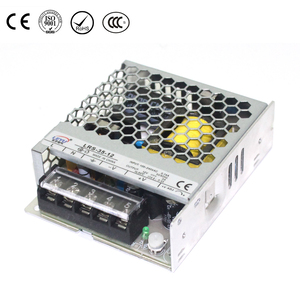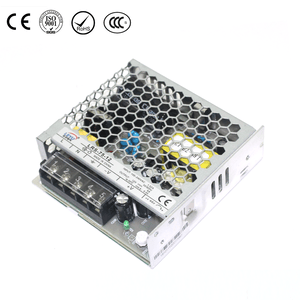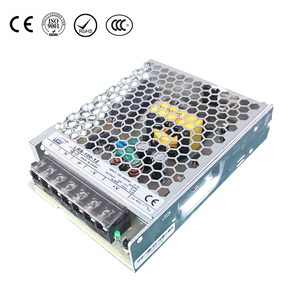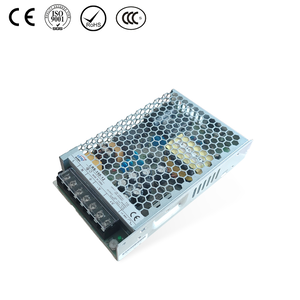why can i hear noises from power supplies
Date:2025-06-04 02:32:55 Visit:1422
Have you ever been puzzled by a faint buzzing or whirring from your electronic devices? You're not alone, and it's not the gremlins at work. This common phenomenon is often linked to the power supplies in our gadgets, the unsung heroes that keep everything running smoothly but sometimes noisily.
Power supplies are important in electronics because they give the energy needed to work. But even though they are important, they can sometimes make noise you don't expect. This often comes from interference from other devices, shaking parts, or fast switching. These are technical words, but they mean problems you can notice in the real world.
In this article, we will examine power supply noise. We will discuss what causes it, such as coil whine and old parts. We will also show you where the noise comes from and give tips to make it quieter. This way, you can enjoy more peace—or at least less buzzing.
The Role of Power Supplies in Electronics
Power supplies are important parts of electronic devices. They change electrical energy into the right voltage. There are different kinds, like linear power supplies and switched-mode power supplies. But power supply noise is a common problem. One type is sound you can hear. This happens when switching parts, which makes other parts shake while changing voltage very fast.
Common Sources of Noise:
Switching Regulators: Usually work at 20–100 kHz. This can make parts vibrate and cause noise you can hear.
Leakage Currents Can cause unwanted loops in the ground wire. You can check this by measuring the voltage between the power wires.
Improper Assembly: If parts are put together incorrectly, the switching speed can drop below 16 kHz, which can make sounds that people can hear.
Toroidal transformers are often used to combat interference due to their efficient electromagnetic interference (EMI) reduction capabilities. Power supplies also utilize capacitors to manage noise levels when connected to grounded peripherals.
|
Power Supply Types |
Reduced Noise Features |
|
Toroidal Transformers |
Less electromagnetic interference |
|
Linear Power Supplies |
Lower noise, better sound quality |
These features make power supplies important for maintaining good sound in audio devices and for ensuring that digital devices always work the same way.
Common Sources of Noise in Power Supplies
Power supplies are the core parts of electronic devices. They ensure the device gets the right voltage and current to work well. However, they can also make unwanted noise, which might hurt how the device works or how people feel when using it. Many things can cause this noise, such as low-quality parts or design problems, making the issue hard to fix. Knowing where the noise comes from can help you pick a better power supply and deal with problems early.
Electromagnetic Interference (EMI)
Electromagnetic Interference (EMI) is a major contributor to the noise emitted by power supplies, affecting many electronic devices. Transformers, a key component in power supplies, are often culprits in producing this kind of interference. They can make noise you can hear, which is a big problem for devices with sensitive audio parts or OLED screens. Sometimes, inverter circuits inside the devices also make noise, which makes the situation worse.
One aspect of limiting EMI is the design of DC-DC voltage converters, which are prevalent in everyday electronics like keyboards and screens. Linear power supplies offer a quieter alternative to switch-mode power supplies because they avoid some EMIs. Power supply layout choices, such as separating incompatible devices across different power lines, can also help manage this problem, reducing overall noise.
Mechanical Vibrations
Another big cause of power supply noise is shaking parts, which can sound like humming or buzzing. This often happens after the device has been used for a long time. The noise usually comes from the transformer inside the power supply. To reduce this noise, the transformer is sometimes put in plastic filled with epoxy to stop the shaking.
Buzzing and crackling sounds can mean loose parts or broken components, so checking carefully is important. Switched-mode power supplies, common in laptops and chargers, often make steady noise around 15 kHz. This noise is usually soft, but some people may hear it clearly over time, especially in quiet places.
Sometimes humming stays whether the device is on or off, as in power supplies for Prusa 3D printers. This means the noise is normal for the design, not a fault. Simple fixes like keeping a steady wall-power link or using a pre-amp can cut the noise and make the device nicer.
High-Frequency Switching and Noise Production
Today, power supplies are a key part of many devices, from computers to home gadgets. But the noise they make can be annoying. This noise often comes from how high-frequency switching power supplies work. These power supplies are common in modern electronics and use fast signals (20–100 kHz) to change voltage. This speed is usually too high for people to hear, but sometimes, it causes buzzing or humming sounds. Let's look at how these power supplies work and what can cause these sounds.
How Switching Power Supplies Work
Switching power supplies or regulators is all about efficiency and compact design. They change voltage using fast signals between 20 and 100 kHz. Even though people usually can't hear these sounds, some parts inside the power supply can still react to them. Important parts like capacitors and inductors may start to shake at these speeds, which can cause buzzing or other sounds you can hear. This noise can often be a zzzZzzzZZZZZZZZzzzzZzzzz-like hum that sneaks through when components aren't adequately secured to the circuit board. Manufacturers usually employ hot glue to keep everything anchored tightly, but lapses in this practice can increase noise levels.
Conditions Leading to Audible Sounds
Specific conditions and components can sometimes exacerbate the buzzing and humming of power supplies. The transformer, a crucial element for many power supplies, can be a noise source if it's not correctly wound or potted. Devices with OLED displays might experience additional noise issues due to the inverters used, which can contribute to those unexpected auditory emissions.
Furthermore, low-quality or cheaply manufactured power supplies can introduce annoying buzzing sounds in audio equipment and the entire setup connected through the power source. Even when the main audio device isn't directly affected, these power supply distortions may infiltrate indirectly. Adding parts or effects to a power chain can make noise problems worse. So, testing each new part well before picking the last setup is important. Knowing these small points can help fix and lower unwanted power noise in your devices.
Understanding Coil Whine
Have you ever been in a quiet room only to notice a faint, high-pitched noise? That pesky sound could be coil whine, a somewhat common – yet annoying – phenomenon associated with power supplies. That constant electronic hum or buzz doesn't quite let you forget it's there. But what causes it, and why is it so prevalent among different power supplies? Understanding coil whine doesn't just help identify the noises coming from your devices; it can also guide you in choosing better-quality components that minimize these disturbances. Let's delve into the characteristics and causes of this audible noise so you can understand what you're dealing with.
What Is Coil Whine?
A coil whine is a distinctive noise often described as an incessant, high-pitched hum or a sound that resembles a coffee maker at work. This noise isn't picky; it can occur whether your power supply unit (PSU) is hard at work or just hanging out while idle. Components within the PSU, such as the transformer or parts of the inverter circuit, are the main culprits, suggesting that design or manufacturing quality plays a role. For example, many users notice coil whining in their computing setups or their trusty 3D printer's power supply. To tackle this buzzing, consider switching to a higher-quality power supply, which often implements additional filtering to reduce such noise.
Some power supplies, like those found in laptops, might produce noticeable coil whine. This comes down to their operation at specific frequencies like 15 kHz, typical of switched-mode power supplies (SMPS). The SMPS tech works well, but if it does not have good noise filters, it can make sounds you can hear. When you know what coil whine is, you can make good choices to improve your sound gear and stop that loud hum. SMPS tech works well. But, without the right noise filter, it can make sounds you can hear. When you know what coil whine is, you can make good choices. These choices will make your audio sound better and stop that noise.
Causes of Coil Whine in Power Supplies
Coil whine in power supplies can come from different places. It sounds like a quiet coffee pot or a noisy hard drive looking for data. This noise is not always the same. It changes, and you can easily hear it in a room. The way the parts are made and their quality are big reasons for this sound.
Switched-mode power supplies are often behind the high-pitched noise that hovers around the 15 kHz mark. These supplies are frequently used in laptops and other gadgets requiring efficient power delivery but are notorious for producing such noise if not carefully designed. To mitigate this, additional filtering techniques can be employed to lessen the impact of coil vibrations, specifically where the noise in the 100 kHz range capacitively couples to connected systems.
While linear power supplies are generally quieter, they aren't immune to coil whine. Poorly designed components like rectifiers and load variations can introduce noise, especially if Schottky diodes aren't used for noise suppression. The differences between power supplies, linear versus switched mode, demonstrate the importance of manufacturing quality in managing coil whine. Knowing these causes can help you pick the right power supply—whether setting up a home studio or just wanting a quieter workplace.
Impact of Component Aging
As power supplies age, they can start to create audible noise. This noise is often the result of degrading components that once reliably regulated voltage and filtered out unwanted variations. It's not uncommon for this to produce crackling or buzzing sounds, particularly as the power supply is under a heavy load. If you've ever heard your power brick hiss or whine unexpectedly, that's probably what's happening! As power supply parts age, they do not handle power changes well. This lets noise get into your audio or device. This is not just a small problem. It can mean bigger issues that hurt how long your gear works or how well it performs. So, it is important to watch these noises. This is true if they get louder. Louder noise could mean you need to fix or change your gear.
Capacitor Aging and Noise
Capacitors play a key role in power supplies by smoothing out fluctuations in electrical output. Over time, capacitors can wear out, often by drying up. When this happens, they lose strength and can't handle fast signals well. This can make them shake and cause high-pitched noise. The noise usually worsens when the device works hard, showing that the capacitor isn't working right. It's important to fix this quickly because ignoring it can lead to bigger problems with the power supply. You might think of using hot glue to stop the noise, but it can worsen things if done wrong. So, if you hear noise from an old capacitor, it's best to replace it to keep the device stable and the sound clear.
Other Aging Components
Besides capacitors, other components within a power supply can contribute to audible noise as they age. Inductors, for example, may start vibrating due to high-frequency signals utilized in voltage conversion. Similarly, inadequate winding or gluing of these components can result in additional noise and interference. This kind of voltage ripple can hurt how audio devices work and add unwanted noise. If you've ever heard your device's sound quality suddenly worsen, the power supply could be the reason. In this case, it's a good idea to check the power supply and change any bad parts to make things work again. As a rule of thumb, always pay attention to new or intensifying noises coming from your power panel, as they could indicate time-sensitive issues that, if left unaddressed, could lead to further complications or failures in your equipment.
Identifying Noise-Causing Factors
Hearing noises emanating from power supplies can be as confusing as frustrating. Electrical setups can be tricky, and many things can cause problems. Switching power supplies (SMPS) are known for making sounds you can hear. They use fast switching to change AC to DC, which can create noise. Because of this, they are often not the best choice for audio devices. Linear power supplies are usually quieter. These noises might be indirect, as devices like DACs (Digital-to-Analog Converters) often filter and mitigate this noise but cannot always completely negate it. To tackle this issue, it's important to understand the factors contributing to power supply noise and how they affect other connected devices.
Diagnosing Noise Issues
When your power supply starts making a crackling noise, it might indicate potential malfunctions or incompatibilities, especially when effects chains are involved. Testing each component individually in the power supply chain can help identify the specific source. For instance, using multiple power supplies to test individual devices can show which gadget adds unwanted noise. At times, noise might also emerge from connecting devices with unbalanced grounds, where the floating ground potential can introduce switching noise. It's important to ensure that your setup's ground connections are balanced and appropriately anchored.
Moreover, while low-noise linear power supplies are typically recommended for clarity, they can sometimes be expensive or rare.
Switching power supplies can add noise, even with filters to reduce it. Buying a low-noise linear option might improve the sound quality if the noise comes from the power supply.
Tools for Detecting Power Supply Noise
Using the right tools is important to keep your audio gear and other devices quiet. Linear power supplies are usually calmer than switching ones, so they are often better for reducing noise. But if it's hard to get a good linear power supply, there are other tools you can use to help reduce the noise. USB isolators, for instance, can minimize noise from USB power sources; however, they sometimes compromise performance speed and might necessitate additional external power supplies.
Testing tools can also help pinpoint which device in your power supply chain contributes to noise. When used in power supplies, batteries require regulation, as their internal resistance changes can affect noise levels. Some advanced switching power supplies, like the IFI iPower, are engineered to reduce noise levels, claiming performance that rivals even the quietest linear options. With the right methods and tools, you can reduce power supply noise, keeping your system sound good.
How to Fix It
Hearing bad noise from power supplies happens a lot, especially with sound gear. But do not worry; there are ways to make it better. By knowing what causes the noise and making smart choices, you can improve the sound and enjoy a cleaner listening experience. Here are some ways to deal with power supply noise: picking the right power supply, using good isolation methods, or upgrading to better parts.
Reducing Electromagnetic Interference
Electromagnetic interference (EMI) from power supplies can be a real buzzkill. This kind of interference is usually brought on by poor wiring or inferior components within the power supplies. High-quality power supplies, such as those offered by iFi, focus on minimizing electrical switching noise, effectively reducing EMI compared to many standard linear power supplies. Also, ensuring your equipment is plugged into properly wired outlets can help mitigate this noise. Using special transformers to filter or isolate your audio equipment from the AC outlet significantly reduces electromagnetic interference, leading to clear, uninterrupted sound.
Minimizing Mechanical Vibrations
Mechanical vibrations from power supplies, especially from switched-mode power supplies, can cause unpleasant audible noises such as crackling or buzzing. These power supplies operate at high frequencies, which can sometimes be heard, making a switch to a linear power supply a good option for those looking to reduce this type of noise. Upgrading to high-quality power supplies used at the audiophile level can also help by employing design improvements that reduce noise generation. In some cases, replacing a noisy power supply with a quieter aftermarket model like the Mean Well can do wonders, keeping your environment pleasant and your music uninterrupted.
Upgrading Components
Upgrading your power supply can make a big difference. Power supplies often cause noise, especially in high-end audio systems. Switching to a linear power supply or adding extra filters to your current one can reduce this noise. A popular choice is the booster BOTW Power & Precision Eco MK II. It's easy to use and has different plug tips for low-voltage devices. Also, reviewing forums and user reviews can help you pick the best upgrade. Some people prefer linear power supplies, while others use switching ones. Trying different setups is the best way to find what works well and keeps the noise low.




-134213.jpg)



